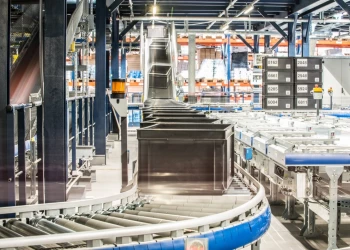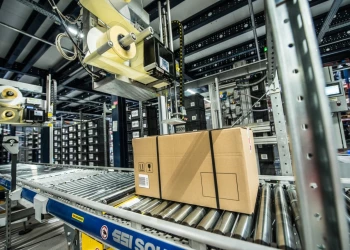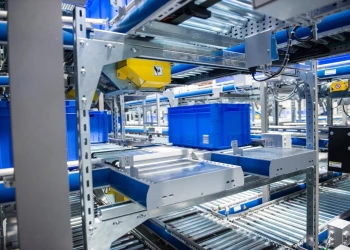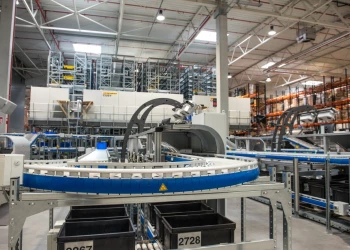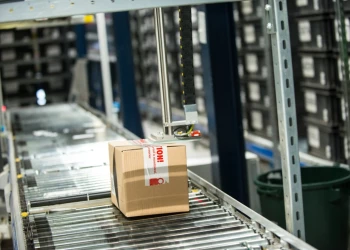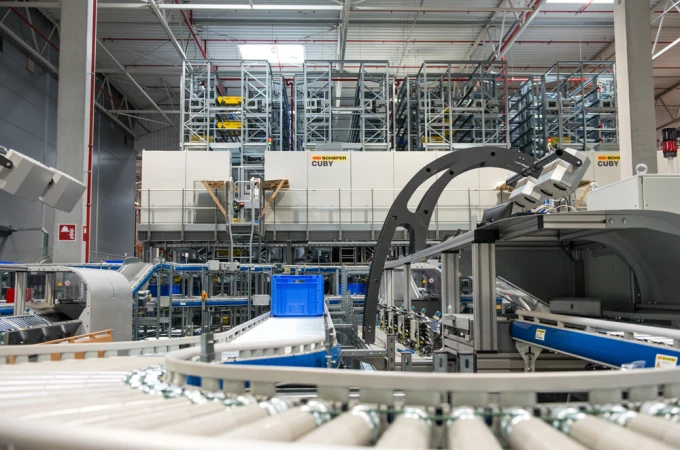Warehouse automation - effect of co-operation of people, machinery and IT solutions
Warehouse automation enables optimising the warehouse and the processes taking place in it, especially concerning storage, preparation and shipment of goods. In effect, warehouse management becomes comfortable, efficient and effective.
What is warehouse automation?
Warehouse (or/and process) automation consists of a series of devices and the software linking them, the use of which eliminates the human factor, which has a direct impact on increasing the efficiency of warehouse operations and reducing their operating costs. Warehouse and/or process automation consists, among other things, of devices that support human labour, such as conveyor systems or picking systems, as well as handheld computers used to control the picking of goods. Warehouse automation also includes any solution that increases storage capacity, sorters, automatic pickers or picking stations, as one of the steps in optimising the warehouse.
There are several key solutions used in warehouse automation:
- intelligent warehouse transport for unmanned supply and retrieval of goods, including self-propelled, rail-mounted and ground-mounted trucks (AGVs and AMRs), as well as conveyors and overhead conveyor systems,
- stacker cranes, carousel systems and robotised systems for the storage of goods, making it possible to dispense with human intervention in the storage and retrieval of products from the racks and in the transport of goods to handling or picking stations,
- automatic order pickers, preparing goods for shipment without human intervention,
- picking stations, i.e. workstations supported by automation and designed so that the risk of errors in order picking is minimised,
- sorters, which automate one- and two-stage picking - the sorter divides the goods given to it collectively into different orders or routes,
- output buffers, which enable goods to be picked automatically over a longer period of time and combined into one shipment (consolidation and sorting),
- racking to increase storage capacity: this includes mobile racking to increase storage space by eliminating service aisles, automatic high-bay shelving, mobile shelving and automatic storage cabinets for small goods.
The most common warehouse automation solutions include storage areas with automatic storage and unloading devices (such as stacker cranes), automatic warehouse transport systems, sorters, automatic palletisers, automatic order picking systems and self-propelled trucks.
Warehouse automation from Lubandy Logistic Services
If you are interested in automating an existing or projected warehouse, get the help of professionals who will select the most effective solutions. Thanks to Lubandy Logistic Services in-depth analysis, your investment in warehouse automation will be cost-effective and produce the expected results.
Activities related to the introduction of warehouse automation start with:
We start our activities related to the introduction of warehouse automation with the following:
- a thorough nalysis of the logistics processes in the client's company
- identification of unprofitable areas and KPIs.
On this basis, we select proven IT tools and prepare the most optimal and comprehensive concept of warehouse automation, together with cost estimates and the ROI period. This service is aimed at all companies that have a warehouse or are planning a warehouse in the future.
Benefits of implementing warehouse automation
- increase the efficiency and accuracy of warehouse operations;
- reduction of process times;
- stabilisation of product and process quality;
- reduction of storage costs;
- full control over inventory;
- reduced risk of errors in warehouse processes caused by the human factor;
- improvement of information flow within the company;
- eliminating the need to employ more staff.
Are you interested in warehouse automation? Contact us. We will select the most advantageous solutions for your company and provide you with an ROI (return on logistics investment) period.
